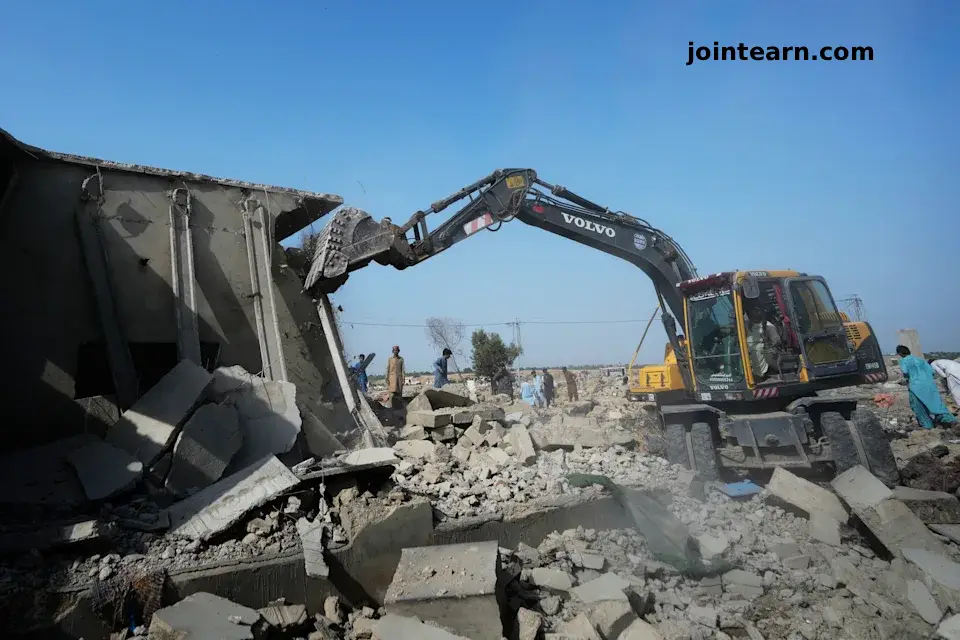
Pakistan and Afghanistan announced a ceasefire on Wednesday following days of the deadliest clashes along their shared border in years, which killed dozens and left hundreds injured. The truce comes amid growing concern over civilian safety and regional stability.
Ceasefire Amid Escalating Violence
The ceasefire followed appeals from regional powers, including Saudi Arabia and Qatar, as fighting threatened to destabilize the border region further. The area is considered a potential resurgence ground for extremist groups such as Islamic State (IS) and al-Qaida, heightening the urgency for a peaceful resolution.
Pakistan accuses Afghanistan of harboring armed groups, a charge rejected by the Taliban government, which has been in power since 2021. The Pakistani Foreign Ministry described the truce as a 48-hour ceasefire, reportedly requested by Afghanistan, while Taliban spokesman Zabihullah Mujahid suggested the ceasefire was prompted by Pakistan. Key border crossings remained closed.
Humanitarian Impact
The clashes caused severe humanitarian consequences on both sides of the border. Hospitals in Kabul treated dozens of casualties. The humanitarian group Emergency NGO reported five dead and 40 wounded, including individuals in critical condition suffering from shrapnel injuries, blunt force trauma, and burns.
Residents of Pakistani border towns, including Chaman, reported mortar fire near villages, prompting local civilians to evacuate.
“People who live close to the border are leaving the area,” said resident Najibullah Khan, urging both countries to end the fighting permanently.
Military Engagement and Casualties
According to reports, Pakistani forces killed dozens of Afghan security personnel and militants in overnight clashes. Afghan forces returned fire, reportedly killing several Pakistani soldiers. Mujahid stated that Pakistani troops used light and heavy weapons in assaults on Spin Boldak, southern Kandahar province, resulting in over a dozen deaths and more than 100 injuries.
Pakistani authorities maintain that their forces repelled “unprovoked” assaults and deny targeting civilians during the fighting.
The cause of additional casualties in Kabul remains under investigation. An oil tanker explosion was confirmed by the Taliban, while Pakistani officials claimed their forces had struck militant hideouts in the region.
Historical Context
The Pakistan-Afghanistan border, known as the Durand Line, has been a flashpoint for decades. Violence escalated after 1979, when Pakistan became a frontline state during the U.S.-backed war against the Soviet Union in Afghanistan. Following the September 11 attacks, Pakistan’s tribal regions saw heightened conflict as the Afghan Taliban, al-Qaida, and other militant groups operated from both sides of the border, targeting NATO forces and Pakistani security forces.
“After the Sept. 11 attacks, Pakistan’s tribal belt descended into chaos as the Afghan Taliban, al-Qaida and other groups operated from both sides of the border,” said defense analyst Abdullah Khan, managing director of the Pakistan Institute for Conflict and Security Studies.
Regional and International Implications
The renewed ceasefire offers a fragile pause but underscores the complex security dynamics between Pakistan and Afghanistan. Analysts warn that any breakdown in hostilities could exacerbate regional instability, hinder trade, and disrupt humanitarian aid delivery.
International actors, including the United Nations, have urged both countries to solidify the truce and prioritize civilian protection. The ongoing ceasefire negotiations are expected to determine whether a more permanent solution can be achieved along the volatile border.
Leave a Reply